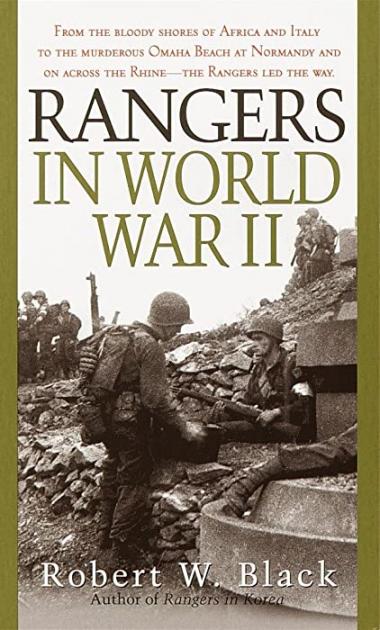Brief content visible, double tap to read full content.Full content visible, double tap to read brief content. Print length 464 pages Language English Publisher Presidio Press Publication date February 23, 1992 Dimensions 4.21 x 1.14 x 6.8 inches ISBN-10 0804105650 ISBN-13 978-0804105651 See all details Description
About the Author Robert W. Black is a retired US Army colonel who served in Vietnam and with the 8th Ranger Infantry Company (Airborne) in the Korean War. Parachute and glider qualified, twice the recipient of the combat Infantry Badge, he was awarded the Silver Star, three Bronze Stars—two for valor and one for meritorious service—the Legion of Merit, the Air Medal, and sixteen other awards and decorations. He was the founding president of the Airborne Ranger Association of the Korean War and was inducted into the Ranger Hall of Fame in 1995. He is the author of A Ranger Born, Rangers in Korea, and Rangers in World War II .
Product Description From the deadly shores of North Africa to the invasion of Sicily to the fierce jungle hell of the Pacific, the contribution of the World War II Ranger Battalions far outweighed their numbers. They were ordinary men on an extraordinary mission, experiencing the full measure of the fear, exhaustion, and heroism of combat in nearly every major invasion of the war. Whether spearheading a landing force or scouting deep behind enemy lines, these highly motivated, highly trained volunteers led the way for other soldiers -- they were Rangers.
From the Inside Flap dly shores of North Africa to the invasion of Sicily to the fierce jungle hell of the Pacific, the contribution of the World War II Ranger Battalions far outweighed their numbers. They were ordinary men on an extraordinary mission, experiencing the full measure of the fear, exhaustion, and heroism of combat in nearly every major invasion of the war. Whether spearheading a landing force or scouting deep behind enemy lines, these highly motivated, highly trained volunteers led the way for other soldiers -- they were Rangers.
From the Back Cover From the deadly shores of North Africa to the invasion of Sicily to the fierce jungle hell of the Pacific, the contribution of the World War II Ranger Battalions far outweighed their numbers. They were ordinary men on an extraordinary mission, experiencing the full measure of the fear, exhaustion, and heroism of combat in nearly every major invasion of the war. Whether spearheading a landing force or scouting deep behind enemy lines, these highly motivated, highly trained volunteers led the way for other soldiers -- they were Rangers.
Excerpt. © Reprinted by permission. All rights reserved. FOUNDING
Product information Brief content visible, double tap to read full content.Full content visible, double tap to read brief content.
Brief content visible, double tap to read full content.Full content visible, double tap to read brief content.
 Loading your book clubs There was a problem loading your book clubs. Please try again. Not in a club? Learn more
Loading your book clubs There was a problem loading your book clubs. Please try again. Not in a club? Learn more 
 Join or create book clubs
Join or create book clubs  Choose books together
Choose books together  Track your books Bring your club to Amazon Book Clubs, start a new book club and invite your friends to join, or find a club that’s right for you for free. Explore Amazon Book Clubs
Track your books Bring your club to Amazon Book Clubs, start a new book club and invite your friends to join, or find a club that’s right for you for free. Explore Amazon Book Clubs
 Inspire a love of reading with Amazon Book Box for Kids
Inspire a love of reading with Amazon Book Box for Kids
